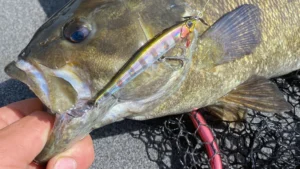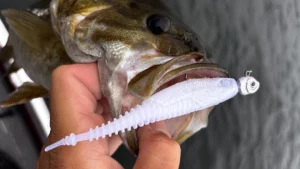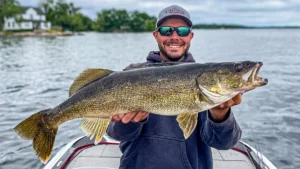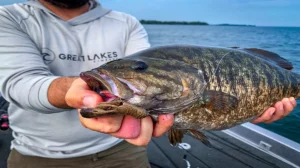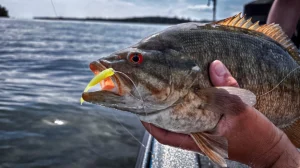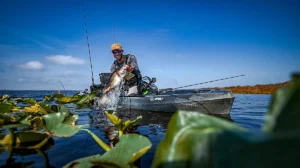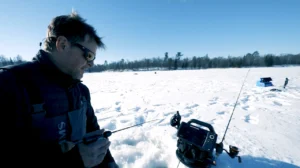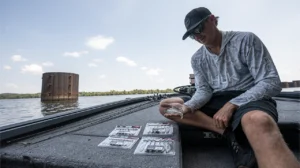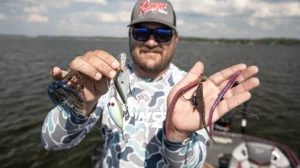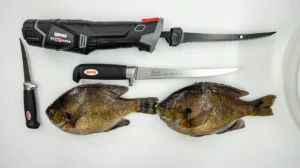Michael Neal’s an open-minded fellow, but when it comes to river fishing, he’s pretty hard-headed. No diss to the Tennessee standout — we’re only referring to the solid structures where he choses to spend much of his time.
No doubt, wing dams, bridge pilings and the rocky foundations of navigational markers offer tremendous opportunities that Neal is keen to exploit. Bass are guided largely by their stomachs, so anything that facilitates the munching is greatly appreciated.
“All those are high-percentage areas where those fish can sit and let bait wash down the river to them,” Neal said. “That’s an everyday occurrence that I’m going to look for in a river situation.”
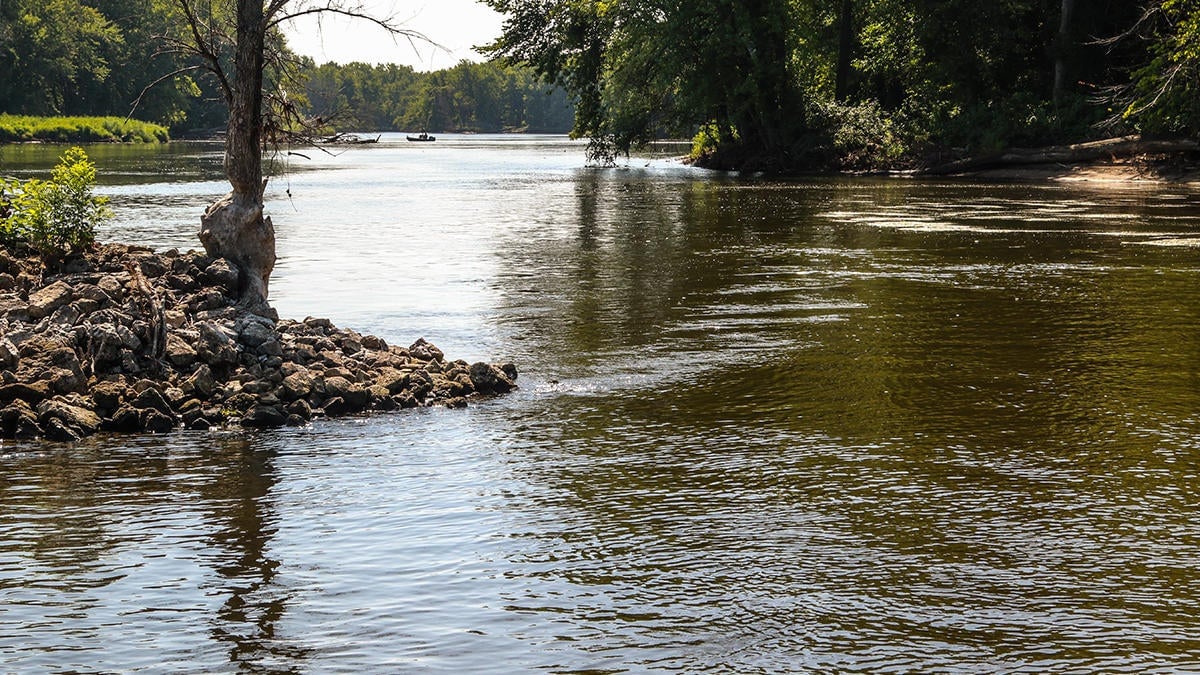
Diversify your arsenal
No surprise, Neal first probes these current breakers with a crankbait. His first choice is a SPRO Fat Papa 55 for the 6- to 8-foot range and then the Fat Papa squarebill for bumping up shallower.
He also likes a 3/8-ounce white swim jig with a 3.5-inch pearl Big Bite Baits Cane Thumper, a 3/16-ounce Big Bite Baits Limit Maker shaky head with a Coontail worm and a swing head jig with a Big Bite Baits Fighting Frog. This, he said, is a scenario that welcomes diversity.
“There are endless opportunities; whatever an angler has the most confidence in,” Neal said. “Typically, I’ll start with a moving bait to see if I can get one of those aggressive ones to bite. If you get one or two on a crankbait, a lot of times, you can follow up with something slower and get another bite or two.
“Even if you don’t get a bite on a crankbait, that doesn’t mean there’s not one there. You still have to mix up the rotation.”
Neal also keeps a short-leader Carolina rig handy for back channel wing dams, as there’s typically a nearby bonus opportunity.
“The Carolina rig is best when you’re not going to hit the rocks themselves,” he explains. “In that current, you have to throw such a heavy weight that it’s easy to hang up. That Carolina rig is good for sand bars or little eddy pockets related to the wing dam.”

Keep in mind
Neal closes us out by offering a few pointers on maximizing the current break game.
Where to put it: Moving water requires greater casting discipline and Neal knows that factoring in the flow is essential to effective presentations.
“You don’t want to cast at 90 degrees,” Neal said. “You want to be either straight up-current or out to about a 30-degree angle. Even if you want your bait to wash down a current seam you don’t want to throw right at the seam, you still want to throw in front of the boat and let the current move it naturally.
“If you’re throwing perpendicular to the (structure), the current grabs your line and pulls your bait to you, as well as sweeping it down. Typically, throwing as close to 0 degrees is best.”
Know the flow: Any hard object breaking water flow creates a fish-friendly scenario, but Neal notes a key difference.
“It’s easier to fish the up-current sides of those navigational towers and bridge pilings,” he said. “The current actually splits a little bit in front of the visible structure and that’s an overlooked part where fish can sit. The wing dams are often so shallow that you can’t fish the front sides without risking getting your boat up on top of the rocks.”
Off the beaten path: Wing dams serving back channels can be hidden treasures, as many anglers fixated on main river structures simply overlook them. Neal checks his mapping for such tucked-away sites because he knows well their potential.
“When the current’s running really, really strong, the fish may get closer to the bank in shallower water where they’re not fighting it so much,” Neal said.


